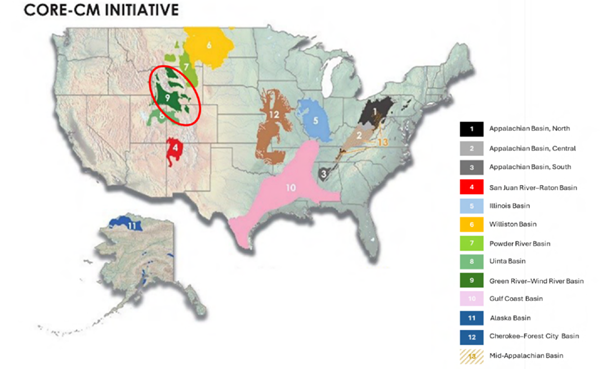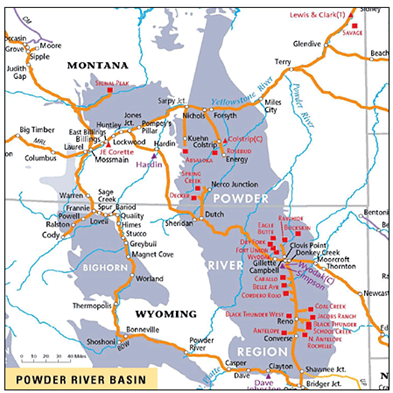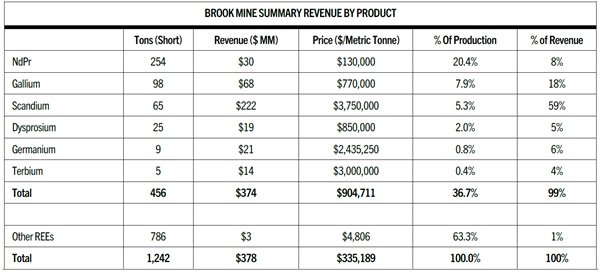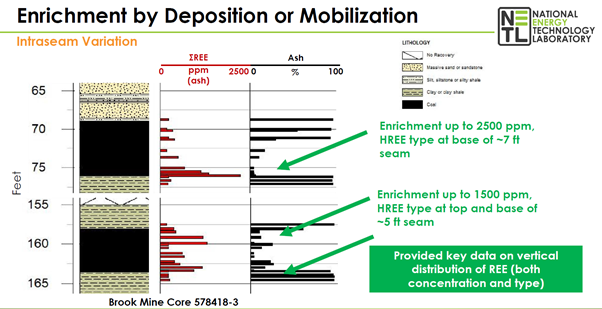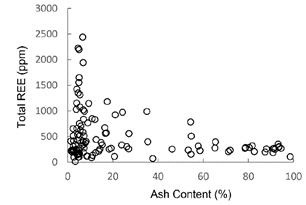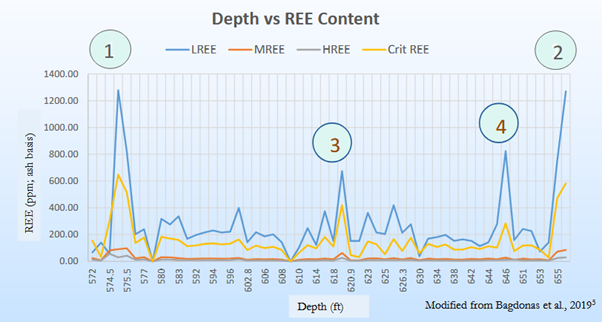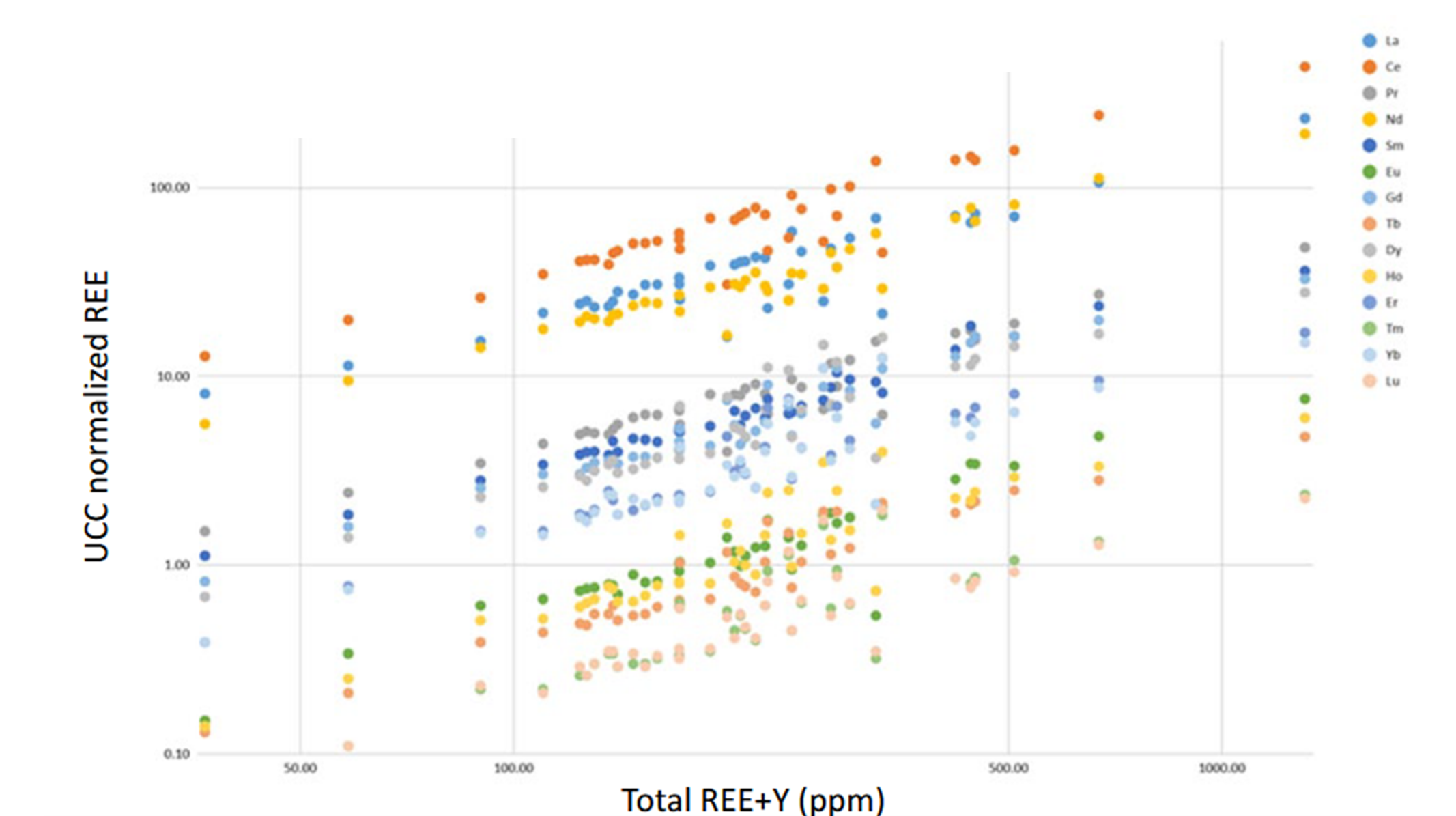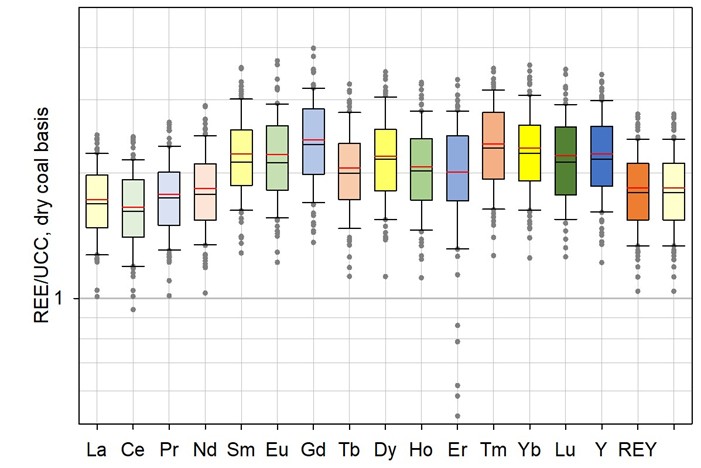Potential Rare Earth Element Resources from Wyoming Coal and Coal Ash
Episode released on October 22, 2025
Episode recorded on July 31, 2025
 Davin Bagdonas discusses the potential for extracting REEs from Powder River and Wind River coals and coal ash
Davin Bagdonas discusses the potential for extracting REEs from Powder River and Wind River coals and coal ash
Davin Bagdonas is a Senior Research Professional at the Center for Economic Geology Research at the University of Wyoming. His current research focuses on characterizing critical minerals, including REEs, in various feedstocks, particularly coal and coal ash in Wyoming.
Highlights
Brook Mine
- Wyoming is the highest producer of coal within the US, accounting for ~ 40% of US coal production in 2023 (240 million short tons) with a price of ~$15 per ton (link).
- Wyoming participated in many of the DOE Carbon Ore, Rare Earth, Critical Mineral projects, including Region 9, the Powder River Basin and Region 7 (Green River-Wind River basins) (Fig. 1).
- Brook Mine was recently in the news because of reported Rare Earth Element (REE) and critical mineral potential, such as the Wall Street Journal article titled “The $2 Million Coal Mine that might hold a $37 billion Treasure (Steinberg, WSJ, Nov. 9, 2023).
- The Brook Mine is within the Powder River Basin, ~ 9 mi from Sheridan in N Wyoming.
- The Brook Mine is owned by Ramaco and their Preliminary Economic Assessment indicated that the total Rare Earth Oxide + Ga + Ge averages 500 ppm on an ash basis with average extraction rates in mid 80% (Ramaco Resources, 2025). The revenue byproduct is listed in Table 1. The lifespan of the mine is projected to be 42 years with annual production of 1,242 short tons of rare earth oxides. There is an estimated 1.7 million tons of REOs in the permitted 4,500 acre region.
- The Brook Mine was one of the test sites included in a study to develop a systematic methodology for assessing REE and CM in coals conducted by the National Energy Technology Lab. to estimate REE resources (Montross et al., 2023).
- The Brook Mine is reported to be the first REE mine opened in ~70 years, since the Mountain Pass Mine was opened in California. The Brook mine site is a greenfield, i.e. it has not previously produced coal or REEs etc.
- The Brook Mine will emphasize REE and critical mineral production but will also produce coal for power plants with recent coal prices of ~ $15 per short ton in Wyoming (2023).
- Results from the NETL study indicate that the highest REEs are found at the margins of the coal seams, generally referred to as “bounding enrichment” (Fig. 3), with ash contents generally ≤20% (Fig. 4) (Montross et al., 2023).
- Similar results were found by Bagdonas et al., 2019 in coals within the Powder River Basin (Fig. 5).
- It is important to understand the difference between REE concentrations reported on a whole rock or coal basis versus on an ash basis. The Brook Mine reports the average REE + Sc + Ga + Ge to be 500 ppm on an ash basis. If the ash content of the sample is ~10%, 500 ppm on an ash basis would equate to 50 ppm on a coal basis. If the REEs are going to be extracted from the coal rather than from coal ash from the power plant, as suggested in the reports, the concentration on a coal basis seems to be more appropriate.
Green River-Wind River and Powder River basins
- Bagdonas served as PI for the DOE CORE-CM project focusing on the Green River-Wind River basins. REE levels from these basins on an ash basis are generally low to moderate (Fig. 6). Considering the average ash levels of these coals to be ~ 5%, the corresponding REE levels on a coal basis would be 5% of those shown in Fig. 6.
The Powder River Basin exports coal to power plants in ~28 states and Bob Reedy quantified coal ash from the Powder River Basin throughout the U.S. (Reedy et al., 2024). If coal ash from power plants is used as a feedstock for REE extraction, it is appropriate to use REE concentrations on an ash basis.
- Bagdonas et al., 2022, characterized REE levels in coal ash in four power plants sourced by Powder River Basin coal in WY. The concentrations of REEs were fairly uniform across the four power plants, with Total REE +Y +Sc ranging from 331 to 342 in fly ash. La and Ce concentrations were highest; however, these are considered excess REEs and not valuable. Concentrations in bottom ash were generally slightly higher than those in fly ash.
- Comparison of REE concentrations in coal ash relative to those in the upper continental crust shows that the ratios are higher for the mid to heavy REEs relative to the light REEs (Fig. 7).
- The extractability of REEs from Powder River Basin coal ashes is high (70%) because of high Ca levels (CaO ~ 30%) in the coal ash (Bagdonas et al., RSER, 2022). Recent studies indicate that extractability can reach 98%. Radionuclide levels in the waste are not a problem because U and Th levels in Powder River Basin ash are low.
- While average REY concentrations in Powder River Basin coal ash from power plants in WY are generally low (312 ppm) relative to concentrations from Appalachian (591 ppm) and Illinois (403 ppm) coal ashes, extractability of REEs is much higher in PRB coal ash (70 – 98%) relative to Appalachian and Illinois coal ashes (~ 30%) (Taggart, ES&T, 2016).
- Technoeconomic analysis of REE extraction from coal ash: Bagdonas et al. (2022) emphasized the importance of co-products for economic viability, including humic acids for soil amendments, activated carbon, synthetic graphite etc. The School of Energy Resources focuses on this work.
- Optimizing coal mining to maximize REE extraction will be important, including split stream mining.
Critical Mineral and Rare Earth Feedstocks in Wyoming
- Wyoming has a lot of other potential feedstocks for critical minerals and REEs, including:
- Trona
- Heavy mineral sands
- Mine tailings
- Hard rock deposits of gold and copper
- Produced water from oil and gas production
